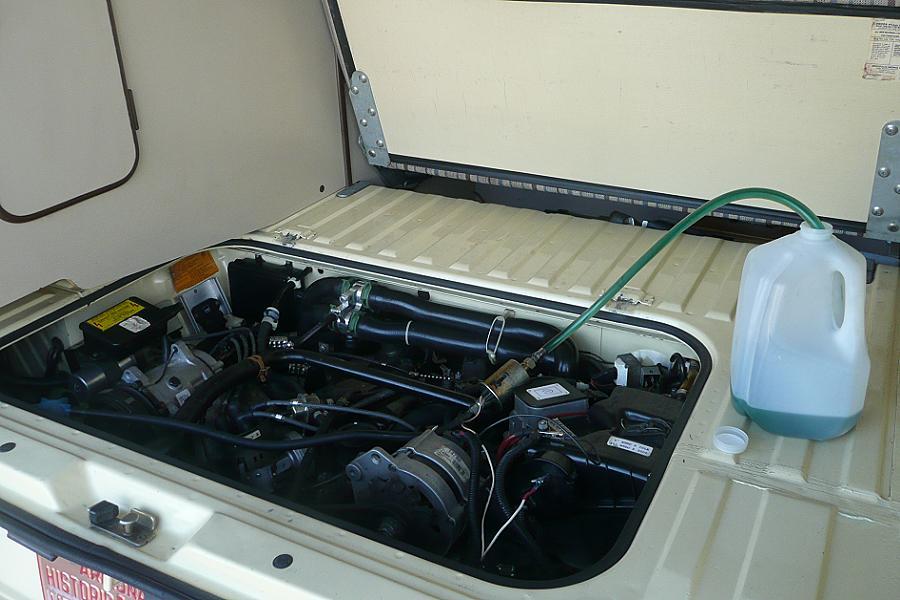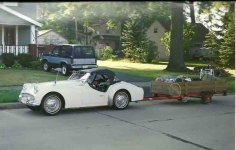Geo Hahn
Yoda
Offline
I always carry a simple in-line electric fuel pump already plumbed to easily bypass the mechanical pump and connect to power. This is my get-me-home spare so I do not have to change the mechanical pump along the side of the road (at night, in the rain, wife sitting in the car, etc).
Unfortunately my bag of small TR3/4 spares went missing when I parked the car in a public place and (because the boot was in use with something bulky) I had to leave the bag on the seat. Oh well, everything in there could be easily replaced.
That lot included the electric fuel pump so I was pleasantly surprised to find this one on eBay:
https://www.ebay.com/itm/362170401702
A suitable (made in USA) pump for 11 bucks (including shipping) is quite a good deal.
To be ready for use I changed the outlet barbed fitting to ¼", added 2' of ¼" fuel line and a couple of alligator clips to the power & ground leads.

In case is is not obvious, the 5/16" barb connects to the rubber line to the mechanical pump and the 2' hose to the ¼" hard line to the carbs.
I thought I'd pass it along as it is pretty cheap 'insurance' against a fuel pump failure.
Unfortunately my bag of small TR3/4 spares went missing when I parked the car in a public place and (because the boot was in use with something bulky) I had to leave the bag on the seat. Oh well, everything in there could be easily replaced.
That lot included the electric fuel pump so I was pleasantly surprised to find this one on eBay:
https://www.ebay.com/itm/362170401702
A suitable (made in USA) pump for 11 bucks (including shipping) is quite a good deal.
To be ready for use I changed the outlet barbed fitting to ¼", added 2' of ¼" fuel line and a couple of alligator clips to the power & ground leads.

In case is is not obvious, the 5/16" barb connects to the rubber line to the mechanical pump and the 2' hose to the ¼" hard line to the carbs.
I thought I'd pass it along as it is pretty cheap 'insurance' against a fuel pump failure.

 Hi Guest!
Hi Guest!

 smilie in place of the real @
smilie in place of the real @
 Pretty Please - add it to our Events forum(s) and add to the calendar! >>
Pretty Please - add it to our Events forum(s) and add to the calendar! >> 




